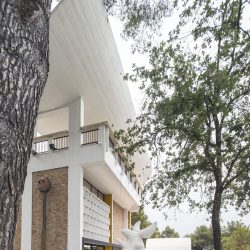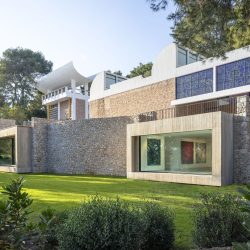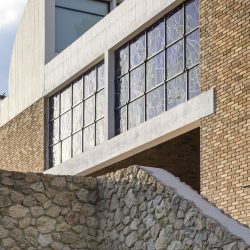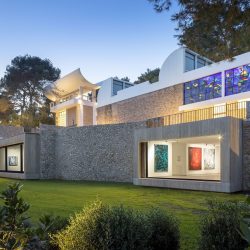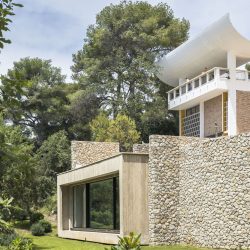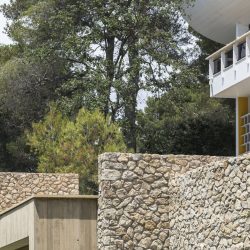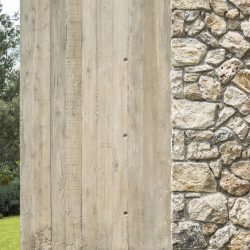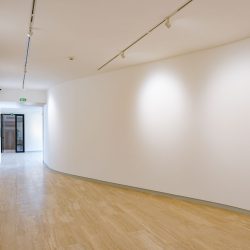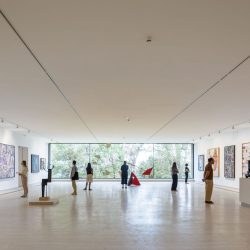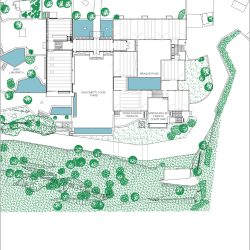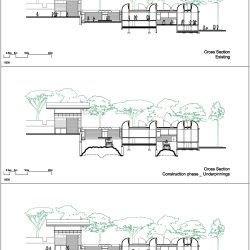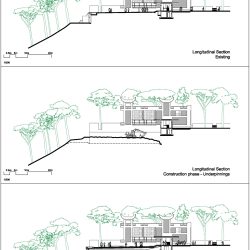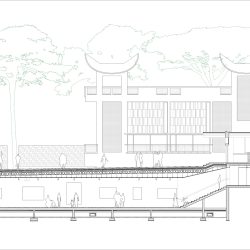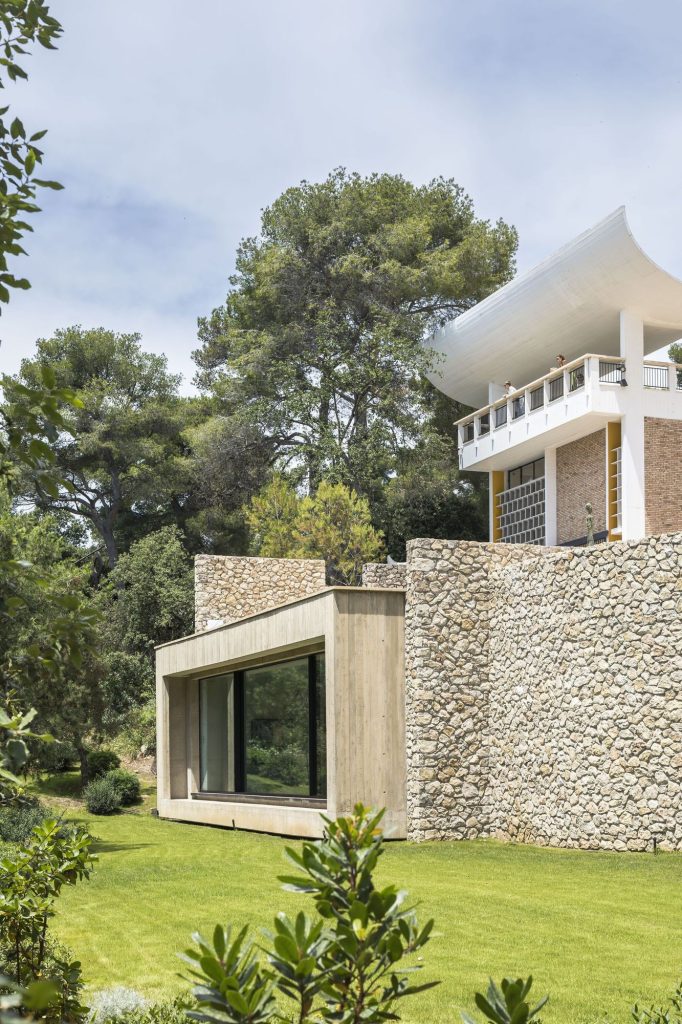
Silvio d’Ascia Architecture . photos: © Sergio Grazia
Between November 2022 and May 2024, the Fondation Maeght conducted significant building works for the first time since its opening. Respecting the original building by Josep Lluís Sert, four new rooms will be inaugurated in June 2024 for the foundation’s 60th anniversary. These rooms embody a new era for the Fondation Maeght. Inspired by large American foundations, the visionary couple Marguerite and Aimé Maeght – printers and gallery owners for some of the most important artists of the 20th century – imagined the first foundation dedicated to modern and contemporary art in France. Inaugurated in 1964 by André Malraux, this place was designed by architect Josep Lluís Sert for and with the artists. Ahead of its time, Sert already took into account ecology (impluviums to collect rainwater, the orientation of the building) and dialogue in perfect harmony with the landscape and the works specially created by Georges Braque, Joan Miró, Pierre Tal Coat, Marc Chagall, Pol Bury, Diego Giacometti, or Raoul Ubac.
Today, the Fondation Maeght, classified as “Remarkable Architecture of the 20th Century,” is one of the jewels of the French cultural landscape, enjoying significant global recognition. With over 130,000 visitors per year, the foundation remains one of the beacons of modern art. However, with only 850 m2 of interior exhibition space, the Foundation could not accommodate both a temporary exhibition and a significant part of its permanent collection, which comprises more than 13,000 works. Anticipated by Aimé Maeght as early as 1973, the need for additional spaces became more pressing than ever. The extension project allows the Fondation Maeght to satisfy the needs of every visitor – curious to discover one of the most important collections of modern art in Europe, which will be presented on a rotating basis – as well as to improve the quality of the visit, enrich the programming, offering indoors conferences, screenings, performances, study days, and concerts. The project will also diversify the economic model of the foundation, which, for its operation and programming, works with its own resources. The expanded surface of the Foundation (500 m2 of extension plus 80 m2 of conversion of existing spaces) will allow the design and development of ever more ambitious exhibitions, continuing the original spirit of the avant-garde of modern and contemporary art.
The extension project of the Fondation Maeght respects the original architecture, structure, and spirit of Josep Lluís Sert, enlarging the exhibition spaces, thus continuing to ensure unique programming with international resonance. These new spaces are dug underground and open through large windows at the back of the building towards the valley. The extension project of the Fondation Maeght enlarges the exhibition spaces by 580 m², respecting the original architecture of Josep Lluís. Sert. A nearly invisible intervention at first glance, which reveals itself as visitors progress along the journey. It consists of two new main volumes and two galleries, nestled beneath part of the foundation’s current floors, inserted into the thickness of the existing building’s stone base. The large hall, built under the Giacometti Courtyard, provides a space of 390 m² (13.5 m wide by 29 m long), free of any visible structure. This layout aims to achieve great flexibility for temporary exhibitions, permanent collection displays, concerts, screenings, or dance performances. The two spaces are connected to the large hall by a 44 m² gallery dedicated to the history of the Foundation and its building (models, original construction drawings, etc.).
Under the Miró Courtyard – restored to its original open courtyard form – there is a smaller room of 66 m² (6.6 m wide by 10 m long). These new exhibition rooms open towards the pine forest through their large extended glass windows, allowing natural light to penetrate underground. Framing of the surrounding landscape punctuates the visitor experience and encourages them to continue towards the outdoor pathway of the Miró Labyrinth. The extension, visible only from the “walkway,” perfectly respects Sert’s innovative architecture and offers a new “Promenade”: from the exit through the small room to the Giacometti Courtyard, passing through the Miró Courtyard whose large stained glass window created by the artist is restored for the occasion thanks to the Friends of the Foundation. The project thus follows the relationship between art and nature, between solids and voids, in harmonious dialogue between the building, the artworks, and the landscape.
The materials used to preserve and respect Sert’s architectural language while clearly asserting the identity of the extension: are on-site concrete for the new volumes in continuity with the stone base, glass for the large windows, and travertine for the floor coverings. The floor coverings of the Giacometti Courtyard and the Miró Courtyard are reconstructed identically with traditional terracotta tiles. As part of the general energy renovation of the foundation, all original exterior joinery and glazing (conversion from single to double glazing) of the cloister vaults have been replaced. The project is complemented by making the new spaces accessible through two PRM (Persons with Reduced Mobility) lifts, one connecting the current ground-floor bookstore to the basement and the other connecting the introduction gallery to the large hall, which is dedicated to bibliophiles. The works also provide the Foundation with an opportunity to remove additions made over the decades and thus rediscover the purity of the original building. The extension project reflects the Fondation Maeght’s commitment to projecting into the future while remaining true to its history and aura.
_

